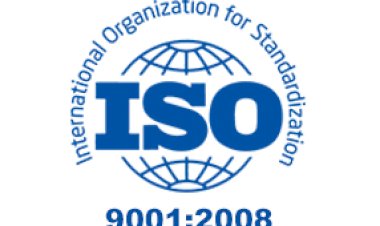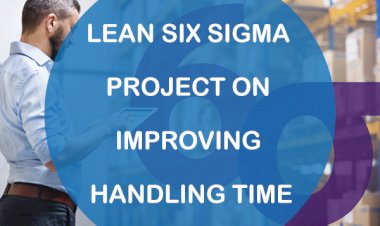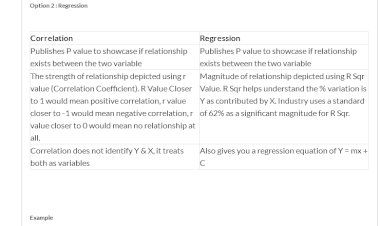Measure Phase
How to do Six Sigma Projects - MeasurePhase - Class 2 including MSA & As-is ProcessCapability
Step 1 : Problem Identification / Improvement Opportunity Identification
Step2 : Gather voice from Stakeholders
Step 3 : Convert CTQ
Step 4 – Create Project Charter
- Business Case
- Problem Statement
- Goal Statement
- Scope
- Roles & Responsibilities Identification & Assignment
- Process Flow Chart
- High Level – COPIS
- Detailed – Flowchart
Sponsor Approval
- Budget need
- Resources
- Data
- Risk
Measure Phase
- Identify the CTQ Characteristic / CTQ Metric for the project
- Create Data Collection Plan
- Collect Data
- Validate Data (Using MSA experiments)
- Assess as-is Process Capability
Identify the CTQ Characteristic / CTQ Metric for the project
- Critical to Quality
- Tea – Hot, Taste, Sugar Quantity, Milk, Presentation, Quantity, Ingredients
Project CTQ – Handling time, Count – Attrition/Defect, Productivity % or count
Handling Time per agent per day/ HT Per month for the process
- Quality Score per agent per call/
- Attrition Count
Quality % - Quality % as a monthly average, Weekly Quality % for the team,
Create Data Collection Plan
NU – Motor Insurance – FSA – Claim TAT =13 Days, Our as-is TAT = 23
- Customer called to inform about accident
- New claims team would notify engg
- If car was beyond repair – my team was notified (TLR)
- Notification or claim was recd in Manager Queue
- Allocate to AM Queue
- Allocate to case handler
- Call the customer and seek car papers etc
- Docs received, price quote – Pay the customer
TAT of Customer Contact
- Agents = Call the customer and seek car papers etc - Allocate to case handler
- Manager = Call the customer and seek car papers etc - Notification or claim was recd in Manager Queue
- NU = Call the customer and seek car papers etc - Customer called to inform about accident
- PH not available – someone else was spoken to
- Send letter – First point of contact’
- Authorized person other than PH
AMHI
NPS
1 Customer – 20-30 feedback (negative)
1 Policy -
Operational Definition –
Pizza Delivery Time –
- Start – time when order added on the system
- End – When the delivery person reaches the first point of contact.
Chq Clearance TAT
- Start: When chq presented in the bank for clearance
- End : Money available as available balance in the account
RU
% people who are billable
# of billing people/Total HC – Non Billable
Good Employee
Present –
Quality Score Monthly
CT (weekly)
Formula =
Sum of total Quality Score/total no of calls
18/20
P1 = 86% 86/100
P2 =76% 76/100
p3 =74%
= No of pass parameter/Total no of applicable parameter
|
Y |
Operation Definition |
Performance Std |
Defect Def |
USL & LSL |
|
Pizza Delivery TAT |
Difference between Start – time and end time when start time is when order added on the system End – When the delivery person reaches the first point of contact.
|
30 Min |
Each time that the pizza delivery exceeds 30 min – it shall be termed as defect |
Upper Spec Limit = 30 Min Lower Spec Limit = NA |
|
Weekly Quality Score |
% Passed parameters from the total applicable parameter |
75% |
Each week when QS is not equal to or greater than 75% it shall be termed as a defect |
USL = NA LSL = 75% |
|
|
|
60% |
Any student receiving less than 60 shall be termed as defect |
USL = NA LSL = 60% |
|
Compliance % |
|
|
|
USL = NA LSL = 85% |
|
|
|
|
|
|
|
Formula to be used |
Data Items needed |
Unit |
Decimals used |
Data Container to be used |
New or existing |
When ready |
|
# of pass parameters/#of applicable parameters*100 |
|
% |
|
Excel/Software |
|
|
|
Y |
Ops Def |
Performance Std |
Defect Def |
USL LSL |
|
|
|
Monthly Quality Score |
% Passed parameters from the total applicable parameter in a month |
95% |
Monthly Quality Score less than 95% shall be termed as defect |
USL = NA LSL = 95% |
|
|
|
Weekly Handling Time Scores |
Average of Sum of handling time of all calls in a week against the number of calls handled |
|
|
|
|
|
|
|
|
|
|
|
|
|
|
|
|
|
|
|
|
|
|
Formula to be used |
Data Items needed |
Unit |
Decimals used |
Data Container to be used |
New or existing |
When ready |
|
|
|
|
|
|
|
|
|
|
|
|
|
|
|
|
Validate Data
Sources of Variation
True Process Variation
Measurement Error
People
- Skill Issue
- Will issue
Machine
-
- Breakdown
- Maintenance issues
- Process of usage not known
- Calibration
Repeatability
- Same Operator
- Same thing
- Same equipment
- The amount of variation observed is called Repeatability
- Different Tests use different measures of variation
- Std Dev. Variance (GRR)
- Range ( X Bar R)
3 Kg, 3.2 Kg, 3 KG
Reproducibility
- Change Operator
- Change Equipment
- Change Both
- The amount of variation observed is called Reproducibility
- Different Tests use different measures of variation
- Std Dev. Variance (GRR)
- Std Dev
- Range ( X Bar R)
MSA – Discrete Data
Effectiveness
% Agreement between multiple readings (different Operators or same operators)
We see that there are 9 agreements out of 10 instances.
Hence my effectiveness score is 9/10 or 90%
Efficiency
Check for % agreement by introducing a master calibrator.
% agreement
Swati
Jyoti M

 Pranay Kumar
Pranay Kumar 
































Comments (0)
Facebook Comments